UPSC Daily Current Affairs- 17th March 2024 | Current Affairs & Hindu Analysis: Daily, Weekly & Monthly PDF Download
One Nation, One Election
Subject: Polity and Governance
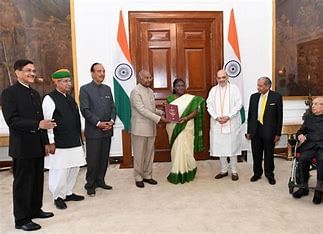
Why in News?
The High-level Committee (HLC) on One Nation, One Election submitted its report to President Droupadi Murmu on Thursday (March 14) morning.
Background:
- HLC was chaired by former president Ram Nath Kovind.
What is meant by simultaneous elections?
- Simultaneous elections, popularly referred to as "One Nation, One Election", means holding elections to Lok Sabha, all state Legislative Assemblies, and urban and rural local bodies (municipalities and panchayats) at the same time.
- Currently, all these elections are held independently of one another, following timelines dictated by the terms of every individual elected body.
- Simultaneous elections for Lok Sabha and state assemblies used to happen in India until the fourth general elections of 1967. However, as successive central governments used constitutional provisions to dismiss state governments before the end of their term, and as coalition governments in the states and the Centre kept collapsing, the country came to see elections at different times through the year.
- According to the HLC report, the country now sees five to six elections in a year — if municipalities and panchayat elections are also included, the number of elections will increase manifold.
What is the need for holding simultaneous elections?
- Frequent elections burden the government exchequer with additional expenditure. If the expenditure incurred by political parties is also added, these figures will be even higher.
- Asynchronous elections cause uncertainty and instability, thwarting supply chains, business investments, and economic growth.
- Disruption of government machinery due to asynchronous elections causes hardship to citizens.
- Frequent use of government officials and security forces adversely affect the discharge of their duties.
- Frequent imposition of the Model Code of Conduct (MCC) causes policy paralysis and slows down the pace of developmental programs.
- Staggered elections induce ‘voters’ fatigue’ and present a significant challenge in ensuring their participation.
Important Recommendations of HLC
- AMENDING THE CONSTITUTION: The Constitution should be amended to enable simultaneous elections in two steps. In the first step, simultaneous elections will be held to Lok Sabha and State Assemblies. For this, no ratification by the states will be required for the constitutional amendment. In the second step, elections to municipalities and the panchayats will be synchronized with elections to Lok Sabha and state Assemblies in such a way that local body elections are held within 100 days of the elections to Lok Sabha and state Assemblies. This will require ratification by not less than one-half of the states.
- SINGLE ELECTORAL ROLL AND ELECTION ID: For the purpose of preparation of a single electoral roll and electoral photo identity cards for use in elections to all three tiers of government, the Constitution should be amended so that the Election Commission of India can prepare a single electoral roll and election ID in consultation with the State Election Commissions. These amendments will require ratification by not less than one-half of the states.
Source: Indian Express
EURASIAN ECONOMIC UNION (EAEU)
Subject: International Relations
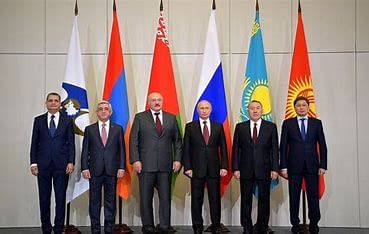
Why in News?
India and the five-member Eurasian Economic Union (EAEU), led by Russia, are poised to commence negotiations on a free trade agreement (FTA).
Background:
This proposed agreement aims to boost India's exports to the EAEU countries, particularly in sectors such as engineering goods, electronics, and agriculture.
About Eurasian Economic Union (EAEU)
- The Eurasian Economic Union (EAEU or EEU) is an economic union of five post-Soviet states located in Eurasia.
- The member states are Armenia, Belarus, Kazakhstan, Kyrgyzstan, and Russia.
- The EAEU was established to promote the free movement of goods, persons, services, and capital.
Key facts about the EAEU:
- The EAEU was officially established on January 1, 2015.
- The union operates through supranational and intergovernmental institutions.
- The EAEU has an integrated single market.
- As of 2023, it consists of 183 million people and a gross domestic product of over $2.4 trillion.
- The EAEU encourages the free movement of goods and services, and provides for common policies in various sectors.
- Provisions for a single currency and greater integration are envisioned for the future.
- The EAEU's formal objectives are to create a common market similar to the European Union (EU).
- Unlike the EU, the EAEU does not share a common currency.
Source: Business Standard
[Intext Question]
Section 82 of Code of Criminal Procedure (CrPC)
Subject: Polity and Governance
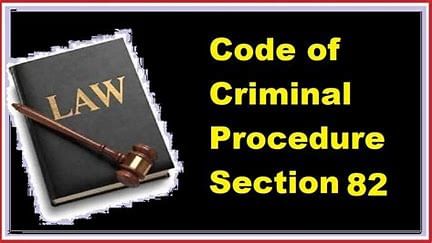
Why in News?
The recent Supreme Court ruling states that an accused cannot claim pre-arrest bail if there is a pending non-bailable warrant and proclamation under Section 82(1) Cr.P.C. against them.
Overview of Section 82 of Cr.P.C:
- Section 82 allows for the issuance of a proclamation when the court suspects that a person is hiding or absconding to avoid warrant execution.
- The court can reach this conclusion either on its own examination of the case records or based on evidence presented by the prosecution.
- A written proclamation orders the accused to appear at a specific place, with a notice period of at least 30 days from the proclamation's publication.
- The purpose is not punitive but to ensure the accused appears in court, hence a proclamation must follow a warrant.
- Court must provide reasons for issuing a proclamation; it cannot be arbitrary.
Issuance of Proclamation:
- Subsection (2) of Section 82 outlines the procedure for issuing a proclamation.
- The proclamation should be:
- Read in a conspicuous place where the accused resides.
- Affixed at the accused's residence or in the town/village.
- Published in a local newspaper.
Proclaimed Offender:
- If a person accused of serious offenses fails to comply with the proclamation, the court can declare them a proclaimed offender.
- Anyone, including police or private individuals, can arrest a proclaimed offender without a warrant.
- The proclaimed offender status ends upon arrest or when they can be presented in court.
- Penalties for a proclaimed offender include imprisonment up to seven years and fines.
Difference between Proclaimed Offender and Proclamation:
- A proclamation notifies the accused believed to be evading warrants, while a proclaimed offender is someone with serious accusations against them.
- Proclaimed offender status follows an inquiry confirming intentional evasion of warrants.
- Being a proclaimed offender carries legal consequences and disqualifications.
Source: Live Law
Eastern Maritime Corridor (EMC)
Subject: International Relations
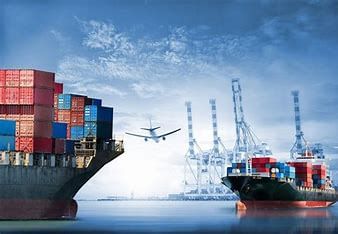
Why in News?
The recent focus on the Eastern Maritime Corridor (EMC) has emerged due to the Red Sea crisis, highlighting its significance as a proposed trade route for various commodities.
Details about EMC
- The EMC is a planned sea route connecting the Indian port of Chennai to the Russian port of Vladivostok.
- Upon completion, this route will reduce transport time from India to Far East Russia to 24 days, a significant improvement from the current 40-day journey.
- Spanning approximately 5,600 nautical miles, the EMC offers a notably shorter path compared to the existing route via the Suez Canal.
- For India, the EMC presents a more direct and efficient pathway to access markets in the Far East, including countries like China and Japan.
Key Points about Vladivostok
- Vladivostok, a prominent city in Russia, is situated in the Far East region of the country.
- Located on the Golden Horn Bay, north of North Korea, and in close proximity to China's border, Vladivostok serves as a crucial strategic point.
- As the largest port on Russia's Pacific coast, Vladivostok is home to the Russian Navy's Pacific Fleet.
- It acts as the starting point of the renowned Trans-Siberian Railway, linking the Far East of Russia to Moscow and onward to Europe.
Source: Daily Hunt
[Intext Question]
GS-III
Vanadium
Subject: Science and Technology
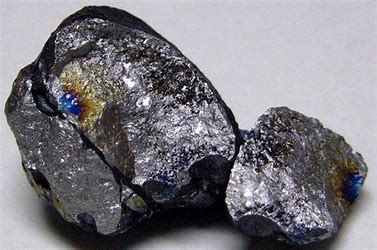
Why in News?
Researchers at the Geological Survey of India (GSI) discovered vanadium, a critical mineral from the Gulf of Khambhat in Gujarat.
Background:
- Rarely found in its pure form naturally, vanadium is present in over 55 different minerals, which makes its production costly.
- At Gulf of Khambhat, it has been found in a mineral called titanomagnetite, which is formed when molten lava cools rapidly.
About Vanadium:
- It is a chemical element with the symbol “V” and the atomic number 23 and is classified as a transition metal.
- It is an abundant element in the earth’s crust, ranking 22nd in position in the upper continental crust.
- It is listed as one of the 30 critical minerals identified by the Government of India.
- It rarely exists as a free element in nature but can be found in about 65 different minerals, including magnetite, vanadinite, carnotite, and patronite.
- It can be detected spectroscopically in the Sun’s rays and occasionally in the light of other stars.
Applications of Vanadium:
- It is used in vanadium redox flow batteries, a type of rechargeable battery used for large-scale energy storage in renewable energy systems.
- It is used as an alloying element in steel production, where it imparts increased strength, toughness, and heat resistance to the steel. The addition of 0.15% vanadium strengthens cast iron by 10-25%.
- Its compounds are used as catalysts in the production of chemicals, plastics, and other materials.
- Its alloys are also used to make nuclear reactors because of their low-neutron-absorbing properties.
- It is used for the treatment of prediabetes and diabetes.
- It is used in the manufacture of aerospace and aviation components due to its high strength, lightweight, and heat resistance properties.
- It is used in the production of pigments, and ceramics, and as a reducing agent in metallurgy.
Source: Times Of India
GLOBAL METHANE TRACKER 2024
Subject: Environment and Ecology
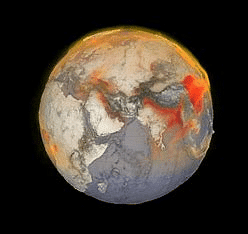
Why in News?
Recently, International Energy Agency (IEA) has released Global Methane Tracker 2024.
Background:
- The Global Methane Pledge, led by the US and EU, aims to slash methane emissions by 30% by 2030
About Global Methane Tracker
- The Global Methane Tracker is an annual report released by the International Energy Agency (IEA).
- It provides the most recent data on methane emissions from the energy sector, incorporating new scientific studies, measurement campaigns, and satellite-collected information.
Key Highlights of the 2024 Report:
- Methane emissions from fuel use in 2023 were nearly the highest ever, at 120 million tonnes (Mt). This is a slight increase compared to 2022.
- Bioenergy, a renewable energy form generated by plant and animal waste, contributed an additional 10 million tons of emissions.
- Of the 120 Mt of methane released into the atmosphere, around 80 million tons came from just 10 countries.
- The United States led in methane emissions from oil and gas operations, closely followed by Russia.
- China led in emissions from coal operations.
- To achieve the Paris Agreement goal of limiting warming to 1.5°C, the world needs to reduce methane emissions from fossil fuels by 75% by 2030.
- The IEA estimated that this goal would require about $170 billion in spending, less than 5% of the income generated by the fossil fuel industry in 2023.
About the International Energy Agency (IEA):
- The IEA is an autonomous inter-governmental organization within the Organisation for Economic Co-operation and Development (OECD) framework.
- It was created in response to the 1973-1974 oil crisis when an oil embargo by major producers pushed prices to historic levels and exposed the vulnerability of industrialized countries to dependency on oil imports.
Source: IEA
[Intext Question]
T+0 Settlement
Subject: Economy
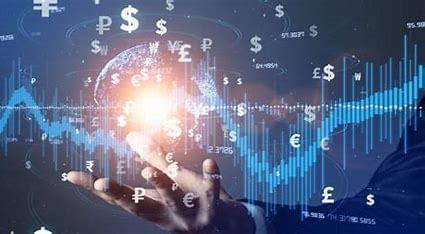
Why in News?
The Securities and Exchange Board of India (SEBI) recently approved the launch of the beta version of the T 0 settlement on an optional basis.
About T 0 Settlement:
- It means that the funds and securities for a transaction will be settled on the day the trade was entered.
- At present, the Indian securities markets operate on a T 1 settlement cycle, where the settlement happens on the next day of trade.
- In 2002, the regulator cut down the settlement period from T 5 to T 3, and in 2003, SEBI further reduced it to T 2. In 2021, the T 1 settlement started and was gradually implemented, with the final phase completed in January 2023.
Advantages:
- Instant receipt of funds and securities to the investor. It will eliminate the risk of any kind of settlement shortage and give greater control over funds and securities to the investor.
- There is expected to be lower counterparty risk and increased liquidity in the market.
- The Moscow Exchange (MOEX), Korea Exchange (KRX), Taiwan Stock Exchange (TWSE), and Hong Kong Stock Exchange (HKEX) offer T 0 settlements for certain types of trades and transactions.
Source: Money Control
Hemoglobin A1C (HbA1C) Test
Subject: Science and Technology

Why in News?
About Hemoglobin A1C (HbA1C) Test:An extensive study revealed that India has approximately 10.13 crore individuals with diabetes and another 13.6 crore individuals classified as pre-diabetic.
- This test is commonly utilized for diagnosing pre-diabetes and both type 1 and type 2 diabetes, as well as aiding in diabetes management. It is also referred to as the glycated haemoglobin or glycosylated haemoglobin test.
- An essential blood test, the HbA1C provides valuable insights into how effectively diabetes is being controlled.
- Hemoglobin, found in red blood cells, carries oxygen from the lungs to the body's cells.
- Upon consuming food, sugar enters the bloodstream. The glucose binds to haemoglobin within red blood cells. Haemoglobin, a protein responsible for oxygen transport, gets sugar-coated in this process.
- While everyone possesses some sugar-bound haemoglobin, individuals with pre-diabetes and diabetes exhibit higher levels. The HbA1C test quantifies the percentage of red blood cells containing sugar-coated haemoglobin.
- Diabetes is a persistent condition arising from the pancreas' inability to produce insulin or the body's ineffectiveness in utilizing the insulin it generates.
- Insulin plays a crucial role in regulating blood glucose levels.
- Inadequate insulin production or utilization leads to elevated blood glucose, termed hyperglycaemia.
- Prolonged high glucose levels are linked to bodily damage, organ failure, and tissue impairment. Diabetes contributes significantly to blindness, kidney disease, heart attacks, strokes, and lower limb amputations.
Source: The Hindu
[Intext Question]
|
38 videos|5288 docs|1117 tests
|
















